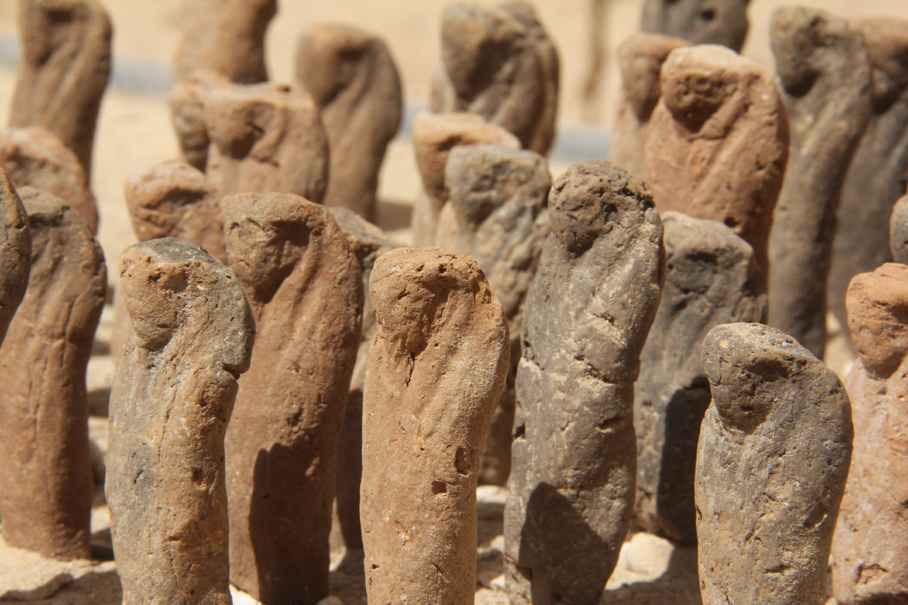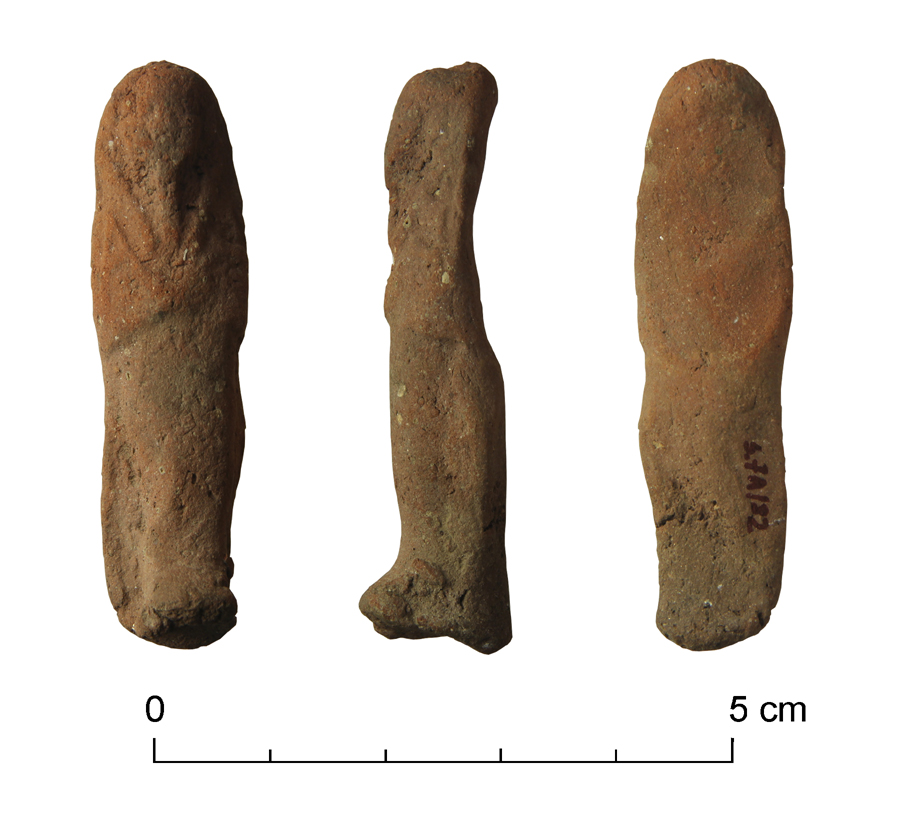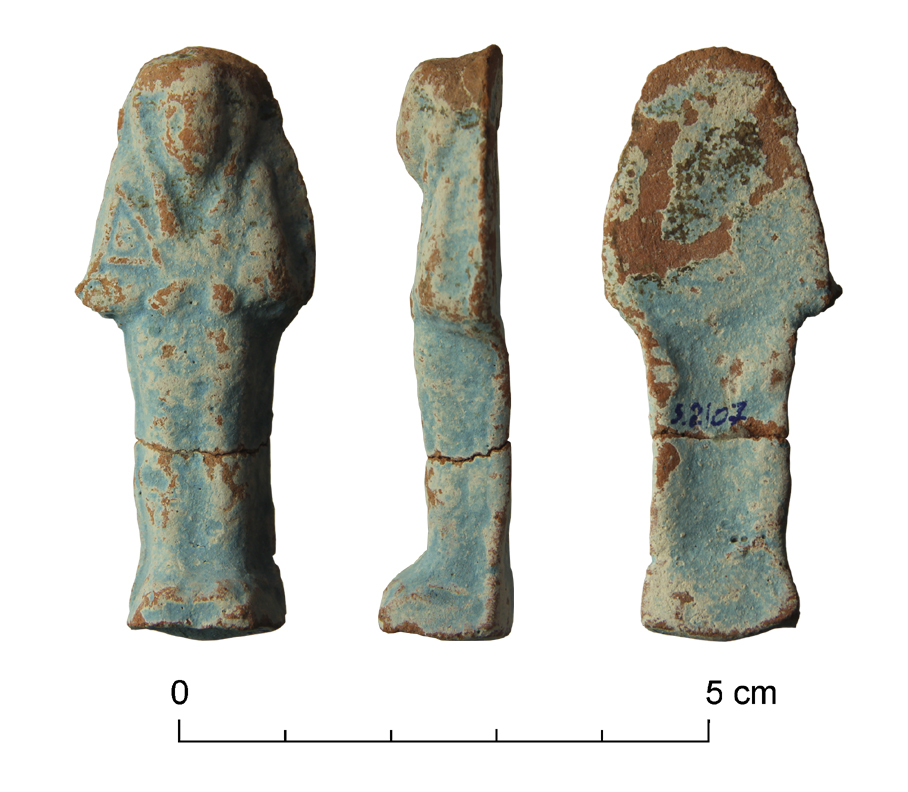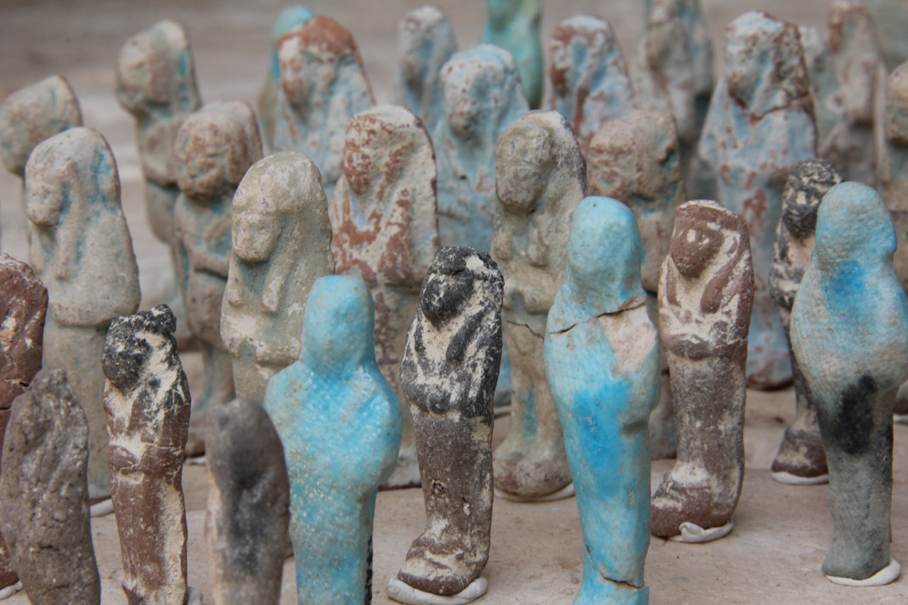News
Ushebtis from the Temple of Hathepsut at Deir el-Bahari

The research project aiming at documentation, analyzing and publication of ushebtis from the PCMA excavations conducted since 2000 in the area of the Hatshepsut temple.
Thus far, the collection consists of 954 figurines, most of which are preserved in fragmentary condition. They were mainly collected from the Third Intermediate Period shaft tombs, all disturbed as a result of repeated robberies. The largest sets derived from the Chapel of Hatshepsut, Northern Chapel of Amun and Courtyard of the Complex of the Royal Mortuary Cult.
All of the studied ushebtis were made from materials commonly used for cheap mass-production: faience, clay and clay painted white or blue to imitate faience. They were cast in small open moulds, often very carelessly.  There are no ushebtis inscribed with names and titles of their owners, not even decorated with paint; all of their details are executed in relief. The vast majority are mummiform “workers”, but not always equipped with their distinctive attributes. Faces, mostly without details, feet, sometimes beards and wigs are visible, and other features quite rarely.
There are no ushebtis inscribed with names and titles of their owners, not even decorated with paint; all of their details are executed in relief. The vast majority are mummiform “workers”, but not always equipped with their distinctive attributes. Faces, mostly without details, feet, sometimes beards and wigs are visible, and other features quite rarely.
Two rudimentary chronological groups can be distinguished amongst the discussed ushebtis: figurines dated to the Kushite Period and older, according to the style from the Twenty-third Dynasty most probably.
Forty eight types of figurines were distinguished by the morphological features. It is likely that specimens of the same type originate from the same workshop, or even the same set of ushebtis, a so-called “gang”. Unfortunately the presented number of types cannot determine the number of burials from which they come. Figurines were documented and described in detail, according to the typologies proposed by H. D. Schneider and D. A. Aston. Thorough attempts were made to delineate features, which are essential for the study of craftsmanship.
A final publication of ushebtis from the Temple of Hatshepsut is in preparation by Agnieszka Niemirka.

Bibliography:
Niemirka, A., Ushebtis from the Chapel of Hatshepsut, [in:] Szafrański, Z.E. (ed.), Deir el-Bahari Studies, Special Studies Polish Archaeology in the Mediterranean 24, (in print).
Project supervisior: Agnieszka Niemirka
Contact: aniemirka@poczta.onet.pl
Egyptological projects I Archaeological projects I Conservation and architectural projects I Field reports I History of research



